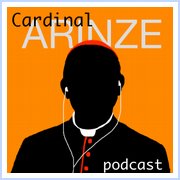It is interesting to note that when Jesus tells his great parable of judgment we call the Parable of the Sheep and the Goats (Mt 25:31-46), the big dividing line between sheep and goats is not their views on justification by faith alone, their sacramental theology, their opinions on the papacy, their thoughts on just war and gun control or even their visible membership in the Catholic Church. It is how they treated “the least of these.”
I've not been paying enough attention to the least lately. Time for some Lentan manning up. Mr. Shea does a quick overview of the corporal works of mercy, and some ideas for how to actually do each of them. Can you hit them all in the next month?
So what are the corporal works of mercy and where do they come from? They are: feed the hungry, give drink to the thirsty, clothe the naked, harbor the harborless, visit the sick, ransom the captive and bury the dead. As you can see, they are rooted in the Bible itself (half of them come from the Parable of the Sheep and the Goats, and the rest are virtuous acts we see attributed to various heroes of the Bible such as Moses or Tobit). The corporal works of mercy are addressed primarily (though not exclusively) to bodily needs since we are embodied creatures. However, they are also charged with sacramental significance too, as we shall see. The works are the response of love to the fact that the Word became flesh and, in the least of these, still dwells among us. Let’s take a quick look at each.
Labels: charity, Virtue
# posted by Squach : 9:10 AM
|




